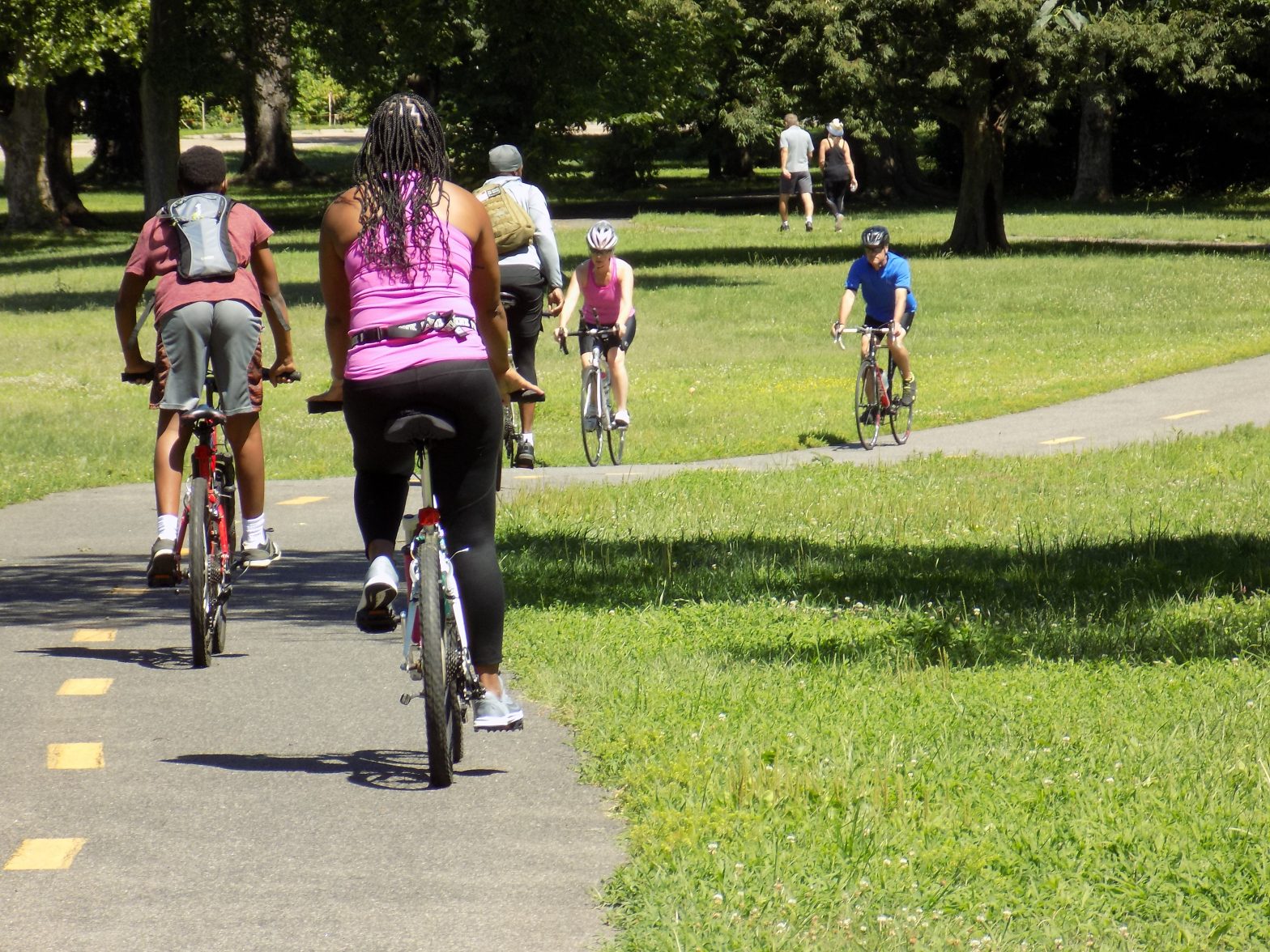How to Stay Active and Healthy as the Seasons Change

When you’re in an outdoor exercise routine, the changing seasons can dampen your plans. Do you enjoy long walks, runs or bike rides along the mall while soaking up vitamin D from the sun? Did you love swimming laps at the D.C. public pools all summer long? You may find shorter, cooler and wetter days decrease your motivation.
Transitioning into fall and winter doesn’t mean abandoning your healthy habits. You can bring your workouts indoors to your home or gym. Or, get some protective gear and stay out in that fresh, crisp air. Here is everything you need to know to stay active as we move into the colder part of the year.
Types of Workouts
The U.S. Department of Health and Human Services provides Physical Activity Guidelines for Americans for optimal cardiovascular health. They recommend getting 150 to 300 minutes of moderate-intensity cardio exercise, 75 to 150 minutes of vigorous-intensity cardio exercise, or a combination of both per week.
They also recommend moderate-intensity muscle-strengthening activity at least two days per week — like bodyweight strength training or weightlifting.
Your walks, runs, bike rides and swimming sessions fall under the cardio category, but it’s important to strengthen your muscles as well. If you’ve ever taken an outdoor workout class where you did squats and planks, that falls under your strengthening category.
Cardio and Strength Workouts Indoors
Are you a gym member, or do you have access to a gym in your building or office? You can hop on a treadmill, elliptical, stair stepper, rower or bike for cardio. Lift weights, take a group class, or work with a personal trainer for your strength workouts. For the swimmers, look into D.C.’s public indoor pools.
You don’t need a gym to work up a sweat inside. Getting a small walking pad or exercise bike for your apartment can be beneficial to do your indoor cardio in the winter. Purchase a set of dumbbells and a yoga mat to build muscle and strength from the comfort of your home.
Cardio and strength workouts are also possible in your home with zero equipment. You can do circuits of bodyweight exercises to get your heart rate up for cardio while strengthening your muscles at the same time. Try out a YouTube video for some guidance.
Stay Out All Winter Long With Warm Athletic Clothing
Exercising outdoors can boost your mental health, and you don’t need to give that up just because it’s cold. In the winter, getting vitamin D from the limited sunlight is important. If you love your outdoor exercise, invest in some cold-weather athletic gear.
Some brands make thin but warm coats meant for hiking in cold temperatures. Opting for a waterproof jacket can help you out on those rare Washington, D.C., light snow days. You can layer leggings under your pants and long-sleeve shirts under your coat. Many athletic clothing brands make thin clothes that will keep you warm but leave you feeling free to move.
Grab a pair of athletic gloves to protect your skin from the bitter cold. A well-fitted beanie will protect your scalp. Don’t forget warm socks for your feet, and sunglasses to protect your eyes from the wind.
Combine Indoor Strength Workouts With Bundled-Up Outdoor Cardio
As much as you layer up, sometimes it’s more comfortable to work out without worrying about the temperature and weather elements. Get the best of both worlds instead. Hit the gym or your apartment to do strength workouts where you can wear less clothing and focus on your form.
Then, bundle up and head out for some fresh air and vitamin D. A quick 30-minute walk, jog, or bike ride can boost your mental health and give you a burst of energy before returning to your work day. If you live near an indoor pool, layer warm clothes on top of your bathing suit and jog over. Jump in to swim some laps.
Make a Plan
The best way to stay consistent with an exercise routine is to make a plan, schedule your workouts and try your best to stick with it. Plan your week in advance and schedule times when you know you can do your strength and cardio workouts.
Although you may have to wait until next year for sweaty jogs in the heat, staying flexible and adjusting can help you stay on track through the winter. Turn on an indoor workout video, hit the gym, or layer up, zip up and hit the streets.
You can reach us at [email protected] and follow us on Facebook and Twitter

























